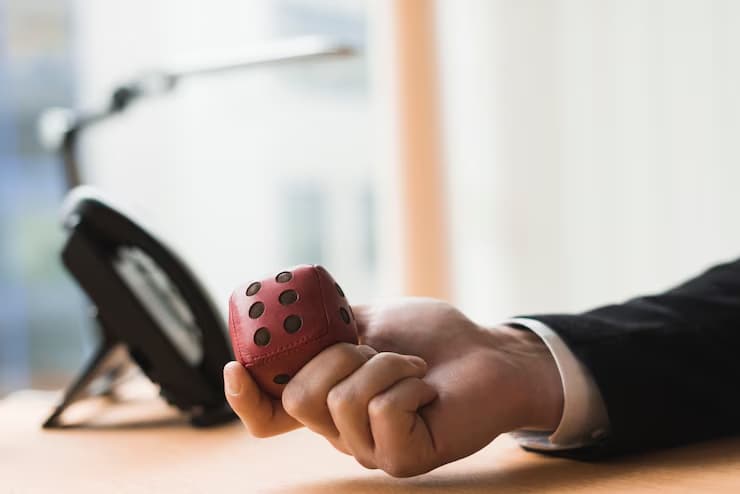At first glance, gambling looks like a matter of choice — a person bets, they win or lose, and they walk away. But for many people, including those engaging with high-stakes sites like UK non Gamstop casinos, it doesn’t stop there. Gambling addiction forms quietly, often without warning, and once it takes hold, it doesn’t let go easily. The science behind it is layered and more complex than most people realise.
In this article, we’ll unpack what actually happens in the brain during this process, why it’s so difficult to escape, and how the problem often hides in plain sight.
1. The Brain’s Reward Circuit: Where It All Begins
At the heart of gambling addiction is a simple feedback loop — risk, reward, repeat. When someone places a bet and wins, the brain releases dopamine, a chemical that signals pleasure and motivates action. But unlike other activities that offer a clear reward, gambling is unpredictable. That randomness makes the dopamine spike even stronger.
Studies using brain imaging have shown that gambling triggers the same areas as substance use: the ventral striatum, prefrontal cortex, and amygdala. These areas deal with emotion, impulse control, and risk assessment. Once they start firing in response to a bet, the brain begins to treat gambling as something important, not just fun, but meaningful.
This reward system becomes deeply ingrained. Even when people lose money, their brains may still release dopamine due to the excitement of the chase or the near-miss effect. It’s not just the win that hooks them — it’s the possibility of a win.
2. Variable Rewards Make It Stick
Gambling doesn’t reward every action. It operates on a “variable-ratio schedule,” which means wins come randomly, not predictably. This is the most addictive kind of reinforcement discovered in behavioural science.
Slot machines, roulette, and scratchcards use this principle. You don’t know when the next win will come, and that uncertainty keeps people locked in. They can’t predict the outcome, but their brains remain convinced that the next spin or hand might be the one.
This is the same psychology used in social media notifications and some video games. The occasional dopamine hit builds a habit. But in gambling, the stakes are money, emotion, and often personal identity.
3. Losses Don’t Register Like They Should
Most people know when to stop after losing. But in the addicted brain, losses don’t register the way you’d expect. Instead of pulling away, people often double down. This is called “chasing losses,” and it’s one of the clearest warning signs of gambling harm.
The brain starts to treat the loss not as a signal to stop, but as a challenge. The prefrontal cortex — the part that governs long-term thinking — begins to lose ground to the emotional and impulsive centres. Logic fades. The focus shifts from outcomes to process: spinning again, betting again, trying again.
In this state, a person may convince themselves that walking away would be foolish. They believe they’re one step away from getting it all back. But that belief isn’t based on logic. It’s driven by a brain caught in survival mode.
4. Emotional States Make It Worse
Stress, boredom, depression, grief — these emotions push people towards escape. Gambling often becomes a coping tool, not just a thrill. For some, it’s the only time they feel control or excitement. For others, it’s a way to numb out and disappear into repetition.
Unfortunately, gambling in these emotional states only reinforces the habit. The brain starts linking relief or distraction with the act of gambling. It remembers that playing made things feel better, even if only for a short time.
This link between gambling and mood regulation is part of what makes the habit so tough to break. The person isn’t just playing to win; they’re playing to feel something different.
5. Online Access Intensifies the Cycle
In 2025, gambling isn’t something that only happens in a casino or betting shop. It’s in your pocket — all day, every day. Online casinos offer fast access, fewer restrictions, and 24/7 availability. That convenience lowers the barrier to entry and increases the risk of uncontrolled use.
Mobile play also means more impulsive betting. There’s less social pressure, no physical chips or cash changing hands, and no natural stopping cues like closing time. A person can spin slots in bed at 3 am with no one else aware of what’s going on.
Add in aggressive bonus systems, reward emails, and fast withdrawals, and the entire cycle speeds up. There’s no time to cool off or reflect — just click and go again.
6. The Illusion of Control and Superstitions
One of the most deceptive things about gambling addiction is the illusion of control. People often believe they can “beat the system” if they apply the right strategy or develop a feel for the game. Even in games of chance like slots, they may start forming patterns, rituals, or beliefs about lucky numbers or times of day.
This belief taps into something deep — the need to feel in charge of outcomes. In an unpredictable world, gambling gives the false impression of control. The brain clings to that feeling, even as evidence of losses builds.
Superstitions and cognitive biases like the “gambler’s fallacy” (believing a win is due after a series of losses) only reinforce this illusion. The mind becomes more invested in how it’s playing, even as reality points to harm.
7. Withdrawal Is Real — But Often Misunderstood
People associate withdrawal with drugs or alcohol. But gambling addiction has its own withdrawal effects. These can include:
- Irritability
- Anxiety
- Restlessness
- Trouble sleeping
- Inability to concentrate
- Mood swings
The absence of the dopamine surge and the interruption of routine can be deeply unsettling. The brain is no longer getting the stimulation it had adapted to. This isn’t just boredom — it’s a neurochemical adjustment.
Because these symptoms aren’t physical in the classic sense, people often overlook them. But they’re real. And they can be severe enough to push someone back into gambling just to feel “normal” again.
8. Why It’s So Hard to Stop — Even When You Want To
Many people with gambling addiction know they’re harming themselves. They may feel ashamed, guilty, or trapped. But knowing isn’t enough. The habit is lodged not just in conscious thought, but in neural pathways shaped by repetition, emotion, and reward.
Stopping requires more than willpower. It often takes support, distance from triggers, replacement habits, and sometimes therapy to rebuild self-control. The brain needs time to rewire. And the person needs patience, from themselves and others.
Conclusion: It’s Not Just About the Bets
Gambling addiction is built in the brain before it ever shows up in the bank account. It’s a behavioural disorder that thrives on risk, hope, and emotional reinforcement. Once formed, it wraps itself around daily life, changing how people think, feel, and respond.
Without cooling-off periods or strict limits, the cycle of addiction can move faster than ever. But there is a way back. It starts with understanding the mechanics, not just judging the behaviour. When people learn how their brains are wired by these patterns, they can begin to undo them. Not overnight, but over time.
Help, support, and change are possible. But first, the myth that “it’s just a bad habit” has to go.






